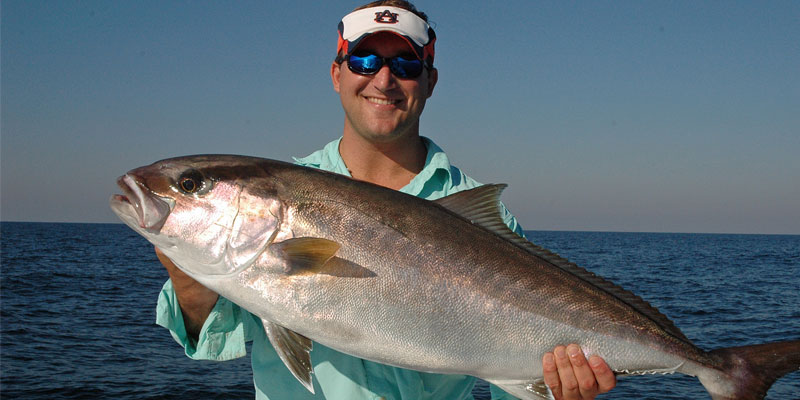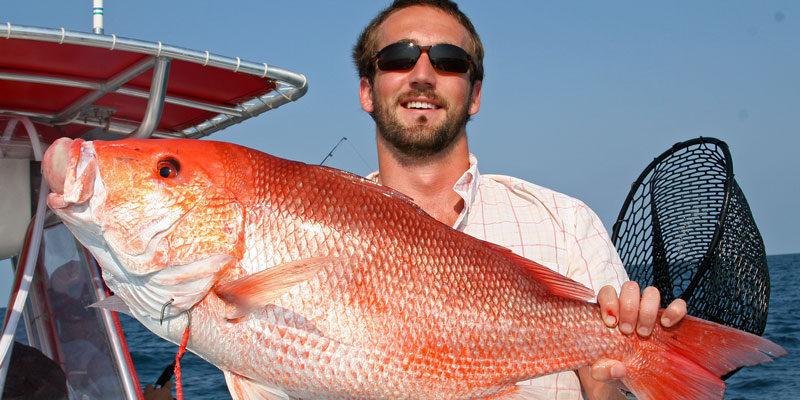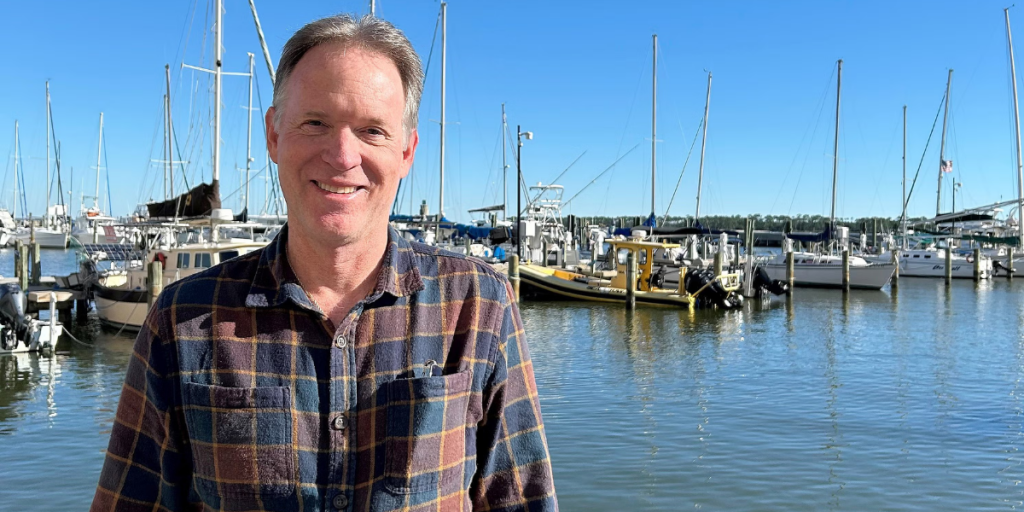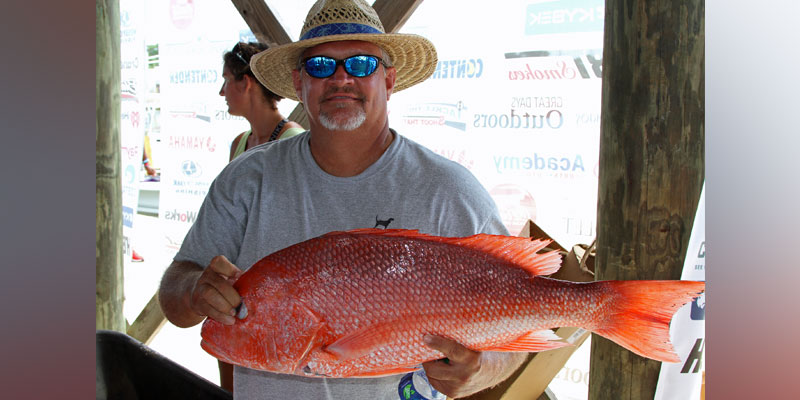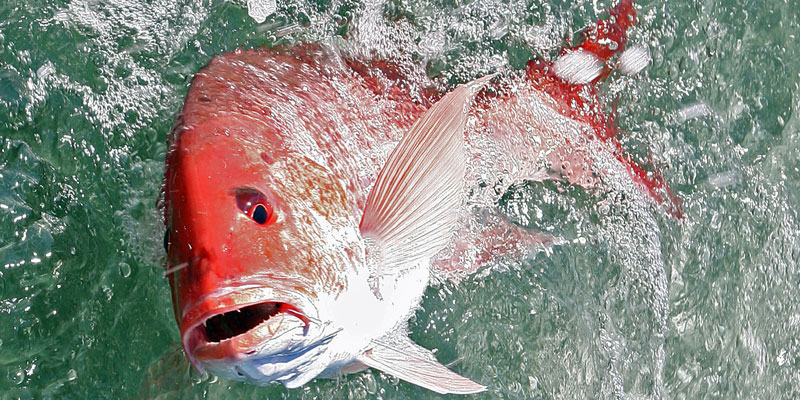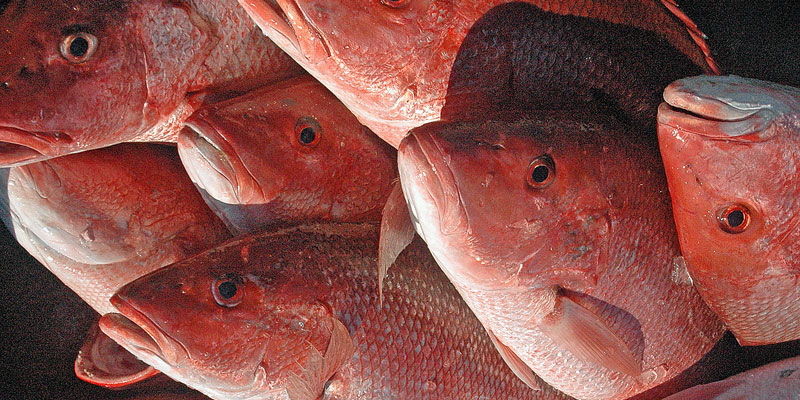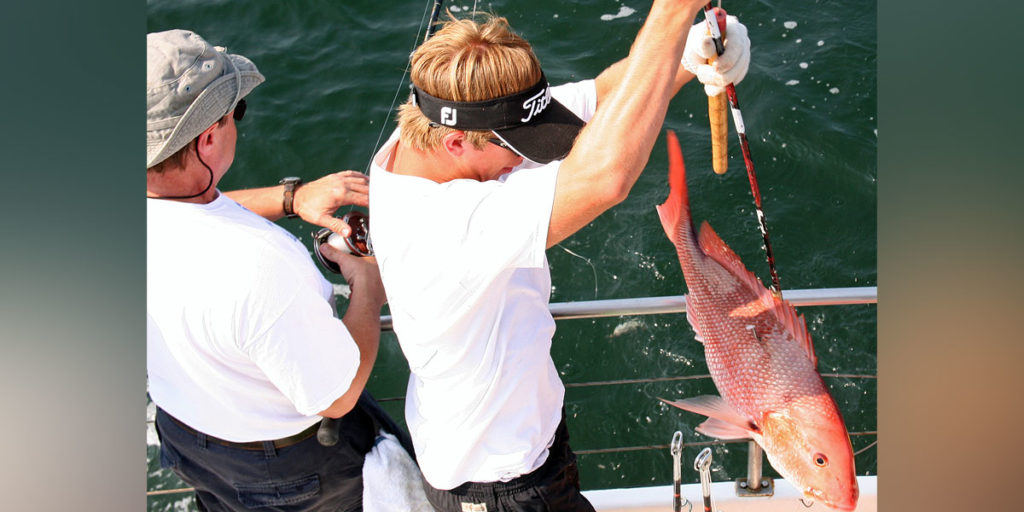The season opener for gray triggerfish in state and federal waters is March 1, which marks the first season that reporting of triggerfish and greater amberjack becomes mandatory in the Alabama Red Snapper Reporting (Snapper Check) System.
The gray triggerfish limit is one per person with a minimum size of 15 inches total length. The National Marine Fisheries Service (NMFS) has set a quota for the Gulf of Mexico at 305,300 pounds, and the triggerfish season is set to close on May 31 or when NMFS determines the quota has been met. Federal management of gray triggerfish is through the Gulf of Mexico Fishery Management Council (GMFMC), an advisory body to NMFS.
“Triggerfish and greater amberjack are very valuable species to the state of Alabama, similar to red snapper,” said Scott Bannon, Director of the Alabama Marine Resources Division (MRD). “We have funded a fisheries-independent study through the University of South Alabama and the Dauphin Island Sea Lab to estimate the number of key reef fish living near artificial reefs and natural habitats off of Alabama. For red snapper, we added the harvest estimates for charter and private anglers from Snapper Check to commercial landings and compared the total harvest to the estimate from the habitat study. The comparison has shown that harvests are considered sustainable.”
Although the GMFMC recommended to NMFS an increase in the gray triggerfish quota to 456,900 pounds last month, Bannon said gray triggerfish and greater amberjack have been species of concern for the Gulf Council. Mandatory reporting of these two fish through Snapper Check will provide additional data for the management of the species. The greater amberjack season is tentatively scheduled to open May 1, but NMFS has not determined how many amberjack were caught during the August-October 2020 season and whether any quota is available for a May opener.
“Receiving the landing reports will allow us to know what people are catching off the coast of Alabama,” Bannon said. “We don’t always agree with the federal landings. In our habitat study, the trend off of Alabama is that triggerfish numbers are going up. We would like to look at what the harvest numbers look like coming into the State of Alabama as opposed to the federal MRIP (Marine Recreational Information Program) surveys. Again, we sometimes have disagreements with what they’re showing, so we’d like to be able to make that comparison of our numbers to their numbers, similar to what we did with red snapper.”
On the red snapper front, the news may not be as rosy. NMFS is insisting that data from the MRIP and state reporting systems be “calibrated,” which could cause significant cuts to Alabama’s quota and reduce the number of days for private recreational anglers.
“Under the Gulf Council state management plan, there is a section that says there will be a calibration factor between the federal surveys and what they say about how many fish are landed in each state and what our surveys show are landed,” Bannon said. “Ultimately, NMFS wants to use that calibration number to develop what they call a ‘common currency’ across the Gulf for each state survey.”
Under certain calibration alternatives, Alabama’s quota for red snapper could go from 1.12 million pounds in 2020 to 547,298 pounds in 2021.
“We’re in disagreement with that, and we are working through the Gulf Council process to find an alternative way to work through that and not have a dramatic cut in our season,” Bannon said. “Mississippi’s calibration is larger than Alabama’s, and they would see a season cut even larger than that. The other Gulf states, Texas, Louisiana and Florida, would stay similar to last year’s quotas. Alabama and Mississippi use federally certified quota monitoring programs that count fish through Snapper Check and (Mississippi’s) Tails and Scales. We developed the Snapper Check program because we felt the federal MRIP program was flawed, and now they still want to use that program as the standard, and that is just not right. We’re working to have the state data incorporated into the stock assessments versus the federal data to give us a more realistic look at what’s being harvested.”
One ray of hope for private recreational anglers is the report that should be coming out soon from the Great Red Snapper Count in the Gulf, an endeavor funded through legislation sponsored by Alabama Senator Richard Shelby.
“We have valuable information coming from the Great Red Snapper Count,” Bannon said. “It has come to a close, and they are about to complete the final report. The count was done through a variety of scientists and universities across the Gulf. That information will be used for what they call an interim analysis of red snapper. We should get that information in April, just ahead of the April 12 GMFMC meeting, where we will discuss options for the 2021 season and beyond. The Great Red Snapper Count estimated that there is three times more biomass of red snapper in the Gulf than the last federal red snapper assessment estimated. It’s hard to say what’s going to come out of that meeting because each state looks at red snapper a little bit differently, but the massive difference in estimated biomass has to help all the states. Each Gulf state should have a better idea as to their respective recreational quotas after this meeting, and Alabama should announce its season shortly after the meeting’s conclusion.”
Because of COVID-19 restrictions, the April GMFMC meeting will be virtual. Visit https://gulfcouncil.org/
In related news, the U.S. Congress passed the DESCEND Act in 2020, which will require vessels fishing for reef fish to have a venting tool or descending device aboard the boat and ready for use in federal waters. Both devices enable anglers to more safely release distressed fish that experience expanded swim bladders caused by the rapid rise from depths greater than 50 feet. The Act is scheduled to go into effect in January 2022.
“The DESCEND Act has to be placed in the code of federal regulations, and NMFS must create a regulation to enforce that,” Bannon said. “That has not been completed yet.”
A program through the Natural Resource Damage Assessment (NRDA) will provide opportunities for a certain number of anglers to get descending devices for free. The NRDA process will provide $30 million over the next eight years for outreach, training and distribution of the devices. Conservation Commissioner Chris Blankenship is the lead NRDA Trustee for Alabama.
Since the 2019-2020 license year, Alabama private recreational anglers who target reef fish are required to have a saltwater fishing license and a Gulf reef fish endorsement. Bannon said beginning this year, anglers can purchase a lifetime Gulf reef fish endorsement. The endorsement will provide a contact list of reef fish anglers that could be used in the future to conduct special surveys, and it will provide additional revenue to support MRD’s reef fish data collection activities and artificial reef program.
Although Alabama’s red snapper season is currently in limbo, Bannon still thinks the move to state management of the fishery was the right move.
“Without state management, we were headed for zero days under a federal season,” he said. “We’re still in better shape than we would have been under federal management. There are some details to get worked out to fish at the level we think we should be able to fish, so stay tuned.”
David Rainer is an award-winning writer who has covered Alabama’s great outdoors for 25 years. The former outdoors editor at the Mobile Press-Register, he writes for Outdoor Alabama, the website of the Alabama Department of Conservation and Natural Resources.




